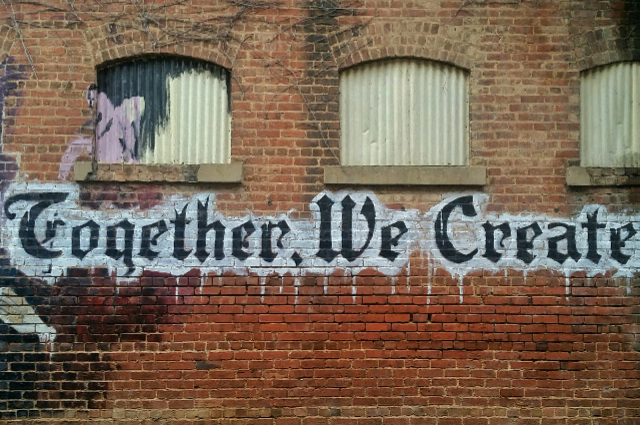
Photo by "My Life Through A Lens" on Unsplash
Giving our students ways to express themselves and communicate their ideas through visual arts opens doors to success for all. The "graffiti" or "written conversation" process gives us a chance to use literacy to deepen our students' thinking in the arts. Making meaningful connections is a key not just to memory, but to also helping new or complicated ideas make sense.
This activity provides a platform on which to plant seeds of thought. It also allows peers to model their reflection and mental-attack processes. I use the graffiti technique, which examines quotes by an artist before looking at his or her work.
Select 4 to 6 artist quotes that will each challenge your students in various ways. They might have new vocabulary, a complicated metaphor, or obscure references. Write each quote in black permanent ink at the center of a separate 18" x 24" paper, leaving plenty of room for students to add their thoughts. Place one page face down on each group table.
Choose a marker color for each group. Count the markers and divide them evenly for your class. For example, if you have 24 students and you chase six quotes, use six colors and put four of each into a bag. As students enter the room, have them pull a marker from the bag, then go to the group table designated by that colour.
The colors and coinciding quotes are randomly selected, as are the groups, Make the selection process more directed, though, if that would better facilitate your class' success. Inform the class they will be reading and commenting on quotes by Picasso (or another artist). Explain that they might not understand what he was saying when they read the quote, but that this process will help them not only understand what he said and thought, but how their classmates think as well.
Tell them that they will read the quote, but not discuss it with their group. When ready, they can write anywhere on the page. They can use all the tools they've learned in their literacy studies to attack the quote and must write down everything they think, question, or learn. (A list of literacy study tools is available online.)
After five minutes, students stop, then rotate to the next table, keeping their markers with them and repeating the process for the next quote. This time, however, they can also read their classmates' offerings and comment on those. They may also begin discussing within their group but they are still to add any comments whether their group questions them or not.
This is where the true power of the process begins. The activity becomes a silent discussion where each student's thoughts, methods of attack, and questions are left as a trail for the rest of the class. Not only do your students gain access to the artist's thoughts, but also to the thought processes of classmates. All of this is modeled on the page for the students to reflect on and use. Students who had no idea what the colors and coinciding quotes in the first quote were really about can now access the next quote through their classmates' writing. They might see a pronoun identified that triggers their understanding. Analysis of a difficult word by someone else might remove a stumbling block. The explanation of a reference might also help.
